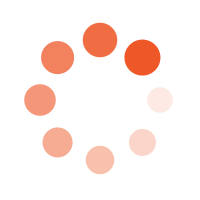A Strategic Guide to Developing a New Design vs Extending the Life of an Existing Product
Choosing between developing a new design and extending the life of an existing product requires careful consideration of market conditions, business objectives, and available resources.
Should you develop a new design or extend the life of an existing product? Companies must carefully evaluate their product strategies to maintain competitiveness and meet consumer demands. The decision to develop a new design or extend the life of an existing product hinges on various market conditions and business objectives.
Here’s a comprehensive guide to help your company determine when to choose either path.
Here’s why your company should consider developing a new product design:

The focus and discipline of DFX is a powerful tool if used as part of a broader strategic approach to developing product/process differentiation, and a sustainable advantage against competition. Involve Design for X in Strategy. Once your team has determined the focus of your strategy, place the focus of design on developing competitive advantage.
At Boston Engineering, DFX is a core part of creating values during our product development process. We focus on several key DFX areas that align with our expertise:
- Design for Manufacturability (DFM)
- Design for Assembly (DFA)
- Design for Cost (DFC)
- Design for Testability (DFT)
- Design for Reliability (DFR)
- Design for Serviceability/Maintainability (DFS)
- Design for Usability (DFU)
- Design for Modularity (DFMo)
Learn more about Design for X (DFX) at Boston engineering: Boston Engineering Design for X

(continued from above)
When to Develop a New Design
- Emerging Market Trends and Consumer Demand
- Scenario: When new trends or technologies emerge, or consumer preferences shift significantly, it may be necessary to develop a new design to stay relevant.
- Example: If the market is moving towards eco-friendly products, a new design incorporating sustainable materials and green technology would align with consumer expectations.
- Rationale: A new design allows your company to capitalize on these trends, offering innovative features that meet current market demands and positioning your brand as a leader in the industry.
- Competitive Pressure
- Scenario: When competitors are introducing new, innovative products, staying competitive may require developing a new design to differentiate your offerings.
- Example: If competitors are launching products with advanced smart technology, developing a new product with unique, cutting-edge features can help your company maintain its market share.
- Rationale: In highly competitive markets, innovation is crucial to prevent losing ground to competitors. A new design can offer differentiation, capturing consumer interest and establishing a competitive advantage.
- Technological Advancements
- Scenario: When there are significant technological advancements that can enhance product performance or features, it may be time to develop a new design.
- Example: Advances in battery technology could justify developing a new design for electronic devices that offer longer battery life and faster charging.
- Rationale: Leveraging the latest technology in a new design can result in superior products that provide better performance, increased efficiency, and enhanced user experience, driving customer preference and loyalty.
- Market Saturation and Declining Sales
- Scenario: When your existing product design is reaching market saturation or experiencing declining sales, a new design may reinvigorate your product line.
- Example: If sales are plateauing due to market saturation, launching a new design with fresh features can reignite consumer interest and stimulate demand.
- Rationale: A new design can rejuvenate your product portfolio, attract new customers, and re-engage existing ones, providing a solution to declining sales and market saturation.
- Strategic Brand Positioning
- Scenario: When your company aims to reposition itself in the market or expand into new market segments, a new design may be necessary to align with the new brand strategy.
- Example: A company looking to move into the premium market segment may develop a high-end design with luxury materials and features.
- Rationale: A new design tailored to specific market segments or brand positioning can strengthen your brand’s image, attract the desired target audience, and enhance your market presence.
Interested in providing your product development team with DFX skills? Learn More about our Applied DFX process and development workshops.


(continued from above)
When to Extend the Life of An Existing Product
- Stable Market Conditions
- Scenario: When the market is stable with consistent demand for your existing product, extending its life may be more cost-effective than developing a new design.
- Example: A consumer product that continues to sell well without significant competition or demand for new features can be sustained with minor updates or enhancements.
- Rationale: In stable markets, the risks and costs associated with developing a new design may outweigh the benefits. Extending the existing design allows your company to maintain profitability while minimizing investment.
- Cost and Resource Constraints
- Scenario: When your company faces budget limitations or resource constraints, extending the life of an existing design can be a more viable option.
- Example: If your company has limited R&D resources, focusing on enhancing or updating the current product can conserve resources while still offering value to customers.
- Rationale: Extending the life of an existing design requires fewer resources and lower investment compared to developing a new product. This approach can be especially beneficial when operating within tight financial or resource constraints.
- Strong Brand Loyalty
- Scenario: When your existing product has strong brand loyalty and a dedicated customer base, extending its life can capitalize on this loyalty without the risks associated with a new design.
- Example: If customers are highly satisfied with a current product, offering minor improvements or additional features can enhance the product’s appeal without alienating the existing customer base.
- Rationale: Extending the life of a product with strong brand loyalty allows your company to continue meeting customer expectations while gradually introducing updates that keep the product relevant.
- Minimal Technological Change
- Scenario: When the industry is experiencing minimal technological advancements, extending the life of your current product design may be sufficient to remain competitive.
- Example: In markets where technology evolves slowly, such as certain household appliances, minor updates to an existing design can keep the product competitive.
- Rationale: If technology is not advancing rapidly, the cost and effort of developing a new design may not be justified. Enhancing the existing product can keep it competitive without the need for a complete redesign.
Conclusion: Making the Right Strategic Choice
When market dynamics favor innovation, technological advancements are significant, or competitive pressure is high, developing a new design is often the best choice to drive growth and maintain market leadership. On the other hand, in stable markets with strong brand loyalty and minimal technological change, extending the life of an existing product design can be a more cost-effective and lower-risk strategy.
Ultimately, the decision should align with your company’s long-term goals, market positioning, and resource capabilities. By understanding the specific market conditions and leveraging the right DFX methodologies, your company can make informed decisions that maximize value and ensure sustained success in the marketplace.
New eBook Available Now!
"Leveling Up Existing Products through DFX"
-Download Insights from a DFX Subject Matter Expert-
 Developing successful new products from scratch is challenging enough, but what about improving on existing designs?
Developing successful new products from scratch is challenging enough, but what about improving on existing designs?
In this eBook, we’ll dive into the real-world experiences of DFX subject matter expert John DePiano, exploring the common areas where existing product owners excel, as well as the key opportunities where targeted DFX support can drive major improvements.

Understanding the Importance of a DFX approach
Applying Design for X (DFX) methodologies upfront in product development optimizes the entire lifecycle by improving manufacturability, testability, reliability, usability, and other critical characteristics. This avoids costly redesigns later on, facilitates high-quality products that satisfy customers, reduces manufacturing and service costs, and supports flexibility through modularity and platforms. The holistic perspective of DFX drives efficient, cost-effective delivery of successful products that provide competitive advantage. Investing in DFX early pays dividends across the entire product lifespan.
Do you offer training on DFX for engineering teams?
Education is critical to effectively implement DFX principles. We provide training tailored to your engineers’ roles and product lines. This includes overall DFX methodology, deep dives into specific disciplines like design for reliability or manufacturability, and practical application workshops. Our hands-on approach combines real-world examples and case studies with tutorials on leading DFX software tools. The goal is building organizational DFX expertise and establishing repeatable processes that endure beyond individual projects. Investing in DFX knowledge pays dividends across your entire product portfolio.

Ready to Begin your next DFX Project?
 Whether you’ve created a new technology, or have an innovative way to use an existing solution, Boston Engineering will turn your ideas into reality. Our experts and Industry Partners will enhance your current team or manage the entire Product Development Process from Market Analysis to Production. Don't leave complex projects or high visibility product launches to chance. Know you're going to get the results you want by working with industry leaders in design, development, and deployment of innovative products driven by Novel Engineering. Contact Boston Engineering Today to get started.
Whether you’ve created a new technology, or have an innovative way to use an existing solution, Boston Engineering will turn your ideas into reality. Our experts and Industry Partners will enhance your current team or manage the entire Product Development Process from Market Analysis to Production. Don't leave complex projects or high visibility product launches to chance. Know you're going to get the results you want by working with industry leaders in design, development, and deployment of innovative products driven by Novel Engineering. Contact Boston Engineering Today to get started.
No matter the challenge, our team possesses the expertise in the engineering disciplines and technologies you need to bring your vision to life. Impossible Challenge? Try Us.
-1.png?width=2000&height=279&name=MED%20Coffee%20Talk%20Mastering%20Use%20Cases%20%26%20Cybersecurity%20(2)-1.png)
Impossible Challenge? Try Us.
Selecting a partner to help you complete your design project is a valuable option to reduce project duration and save money.
The Boston Engineering product development system encompasses DFX to ensure a smooth product launch and success in the marketplace. Boston Engineering has DFX knowledge and experience to address aspects and values of a product such as manufacturability, test, reliability, safety, serviceability, cost, and compliance with industry standards and government regulations.

Imagine your Impact: Stay up-to date- with the latest insights and trends we're watching. Add your email address below and sign up for a Monthly Summary of our most impactful posts!











